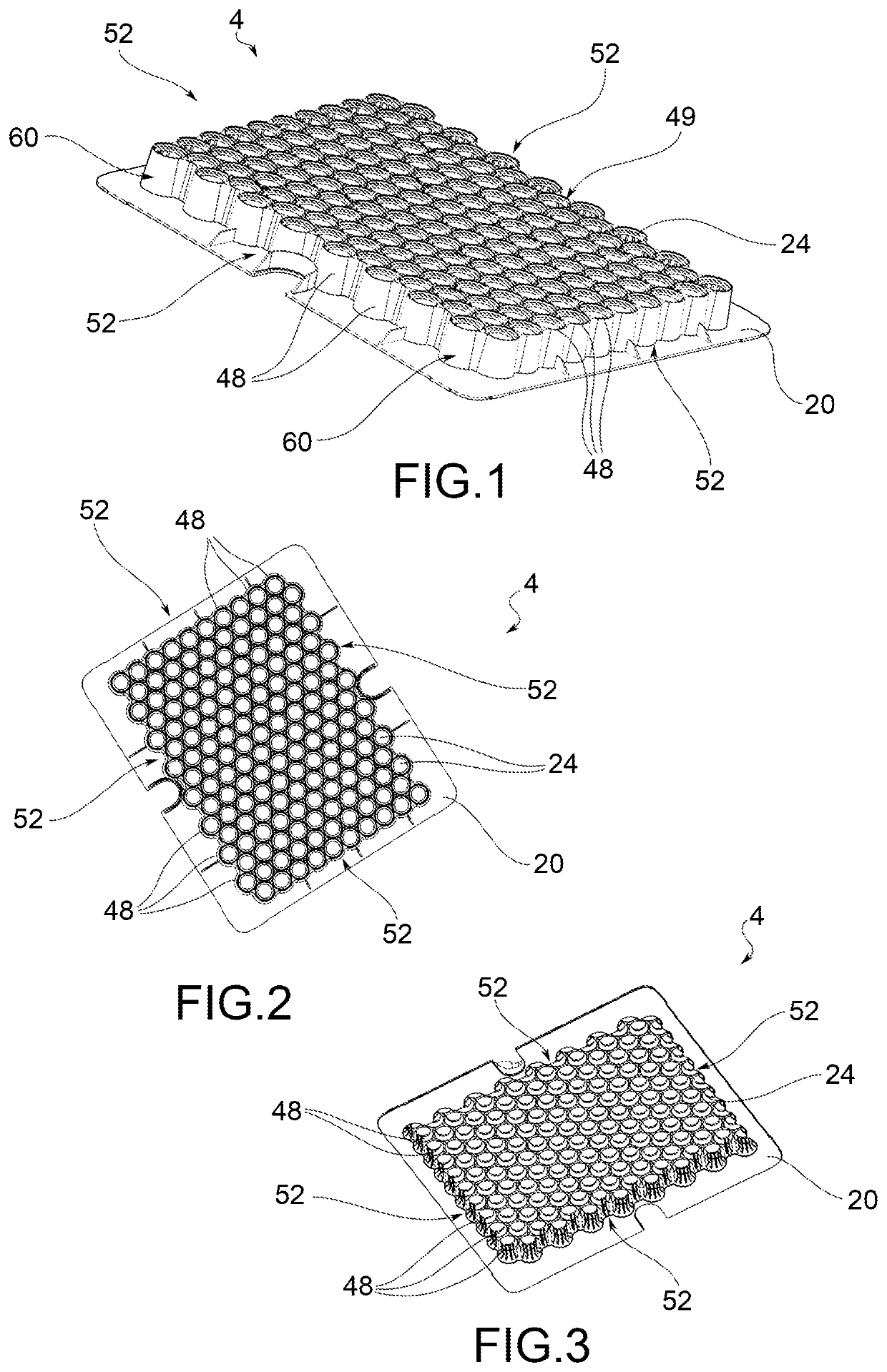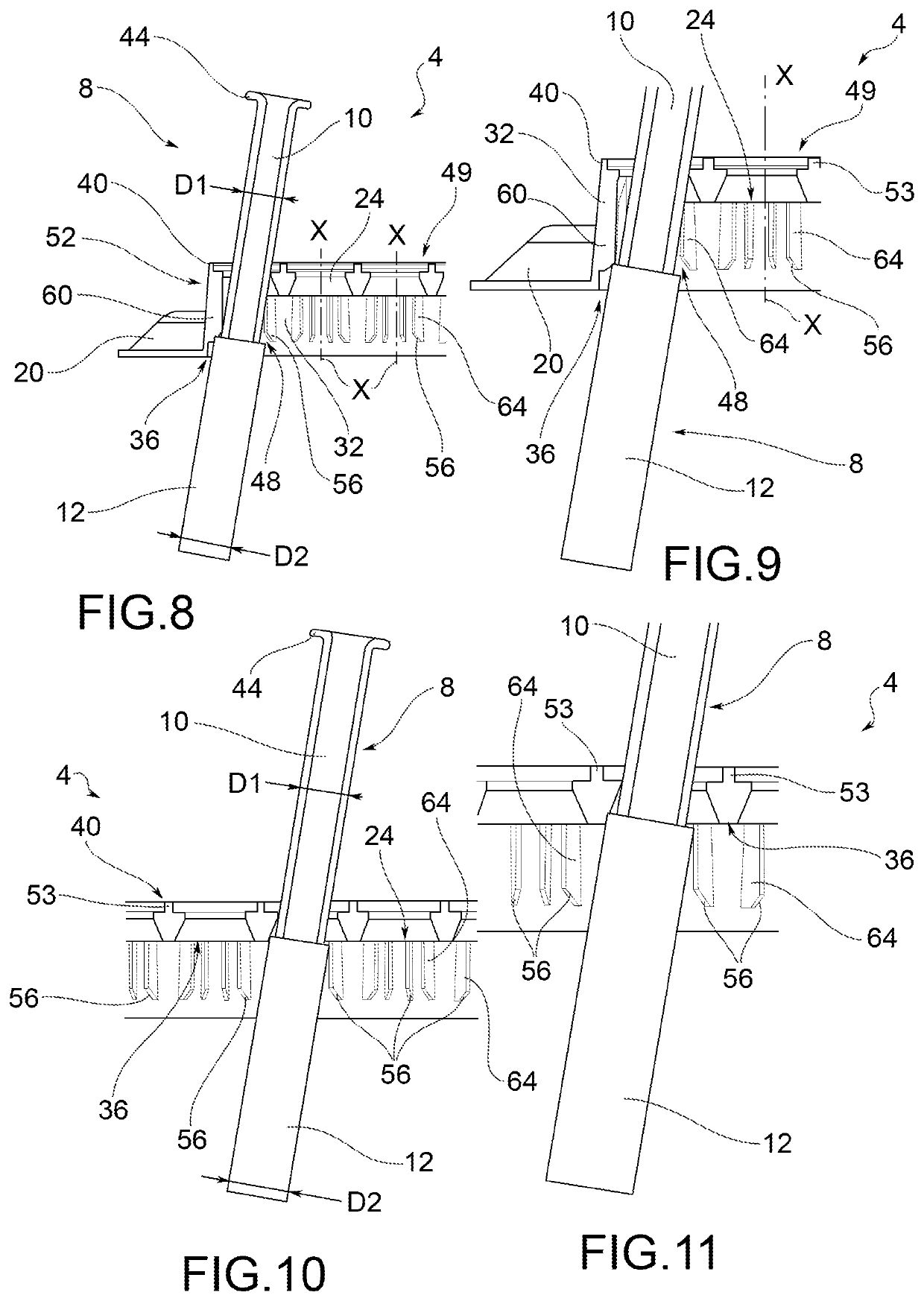Structure for the packing of primary containers for pharmaceutical use
- Summary
- Abstract
- Description
- Claims
- Application Information
AI Technical Summary
Benefits of technology
Problems solved by technology
Method used
Image
Examples
Embodiment Construction
[0035]With reference to the aforementioned figures, reference numeral 4 indicates an overall view of a structure for packaging containers 8 for pharmaceutical use.
[0036]It is worth noting that, for the purposes the scope of protection of the present invention, the specific type of containers for pharmaceutical use is not relevant, meaning containers of various types, sizes and / or materials, such as syringes, vials, tubular injection vials, bottles and the like or medical devices with or without means of containing a pharmaceutical, such as autoinjectors with or without Carpule or the like.
[0037]In particular, as shown in greater detail below, the present invention is advantageously applied when containers 8 having a double diameter, i.e. a first portion or upper portion 10 having a first diameter D1 and a second portion or lower portion 12 having a second diameter D2, preferably larger than said diameter D1, are used.
[0038]The structure 4 comprises a tray 16 which houses and support...
PUM
 Login to View More
Login to View More Abstract
Description
Claims
Application Information
 Login to View More
Login to View More - R&D
- Intellectual Property
- Life Sciences
- Materials
- Tech Scout
- Unparalleled Data Quality
- Higher Quality Content
- 60% Fewer Hallucinations
Browse by: Latest US Patents, China's latest patents, Technical Efficacy Thesaurus, Application Domain, Technology Topic, Popular Technical Reports.
© 2025 PatSnap. All rights reserved.Legal|Privacy policy|Modern Slavery Act Transparency Statement|Sitemap|About US| Contact US: help@patsnap.com



